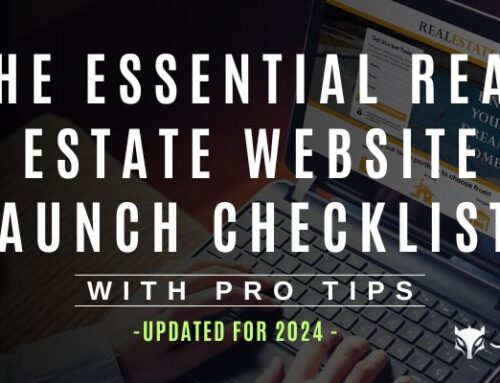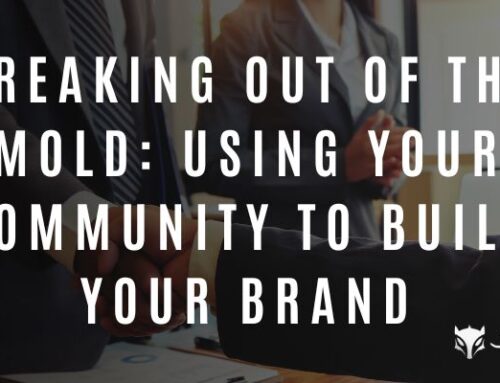“A common calculation in the business world is return on investment, or ROI. Finding the ROI of your social media marketing, however, can be difficult.” (SalesForce)
Improving your real estate reach requires that we use many different tools, platforms, and techniques.
Some people want to learn about your listings—and about your services—through an old fashioned flyer. Other people max out all the different ways that social media can help them find the perfect home…. Facebook, Twitter, Instagram, Snapchat, YouTube, Google Search, Zillow, Yelp, and on and on.
But which social media efforts should you focus on?
What offers you the most reward in terms of new real estate clients, or gives you the best bang for your buck on networking your sphere of influence? How do you tell the difference between different real-estate focused campaigns and audiences?
ROI
What you can do with each and every effort is look at its return on investment, or ROI.
You can analyze a number of factors—say, whether or not a client was a repeat or whether it was a networking referral, to name two.
You can also look at the sales brought in by each individual campaign and the money and/or hours spent to create your goal.
Then, you can determine how much your social media goals are worth to your real estate business.
Those goals differ from one real estate company to the next. Some real estate businesses are focused on online contacts. Others may want to dive into how the links they posted on their blogs led to clients.
Whatever you do, it’s necessary to focus on the process and metrics so that you can determine where you had success and where it did not work out.
Need help analyzing how social media affects your real estate business? Use this detailed graphic to get started.
Use These 5 Steps to See If Your Social Media Is Profitable Infographic

(source)
Summary
Return On Investment = (Gain From Investment – Cost of Investment) / Cost of Investment
To Calculate ROI on your Social Media Campaign:
Find out how much you gained from the campaign
- Total revenue generated by the campaign
- Gross profit
- Revenue minus the cost of the campaign
- Net Profit
- Gross profit less all expenses
Find out how much you spent on the campaign
- Monetary value of your time
- Actual dollars spent
- Creative costs
- Technical costs
- Advertising costs
To Calculate ROI You Need To Find The Value Of Your Social Media Goals:
- Choose a Goal
- Example goals
- Total spent per client
- # of listing appointments
- Completed contact forms
- Email subscriber list growth
- Clicks on links in posts
- Newsletter sign ups
- Lead Magnets downloads
- Webinar Attendance
- Video Views
- # comments on posts
- # of email forwards
- IDX sign up
- # of listings viewed
- # of Retweets
- Attendees at an event
- Example goals
- Determine Which Metrics Will Help You Measure Success
- Leads
- A person that is interested in your services
- Conversions
- The number of social media generated leads who complete your choosen goal
- Conversion Rate
- (Number of conversions / Total number of leads) x 100
- Shares
- Retweets
- Repin
- Like
- Any Social Share
- Lead Value
- Value of action taken / Number of leads
- Follower Growth
- Number of new followers on each platform
- Comments
- On a blog post or social media post
- On Twitter this could be either a mention or a tweet linking to you
- Page Views
- Total number of times a particular page is viewed
- Unique Page Views
- Combines pages views that are generated by the same user during the same session
- Leads
- Track Your Metrics
- Google Analytics
- Track specific metrics
- Get a more precise look at the performance of your campaign
- Social CRM software
- Salesforce
- Get total amount of revenue from your social media campaigns
- Find out when customers use multiple platforms
- Salesforce
- Google Analytics
- Tie Your Metrics To A Monetary Value
- Calculate Your Total Expenses
- Staff
- Salary
- Time
- Content
- Cost
- Promotion Costs
- Technology and Analytics
- Tools
- Apps
- Reporting
- Staff
- Measure The Opportunity Cost Of The Campaign
- Find the total cost of the campaign
- Compare it to the costs to achieve the goal with other forms of marketing
- Isolate Social Media’s Impact
- Purchase frequency
- Total size of purchase
- Lifetime customer value
- Customer advocacy
- Calculate Your Total Expenses
- Update Your Reporting – Make Projections and Improvements
- Determine Your Customer Lifetime Value (CLV)
- The amount of revenue a typical customer will generate for your company during their engagement with your brand
- (Monthly value) x (Number of months a customer is active)
- Prioritize Your Metrics
- The most important metric is called your KPI or Key Performance Indicator
- Set target values for your KPI’s
- Let your first campaings set your benchmarks
- Your customer acquisition cost or CAC should be roughly 10% of your CLV
- Determine a Way To Report Your Results
- Work on a time frame that makes sense
- Review your results
- What worked
- What did not work
- Determine Your Customer Lifetime Value (CLV)







Leave A Comment